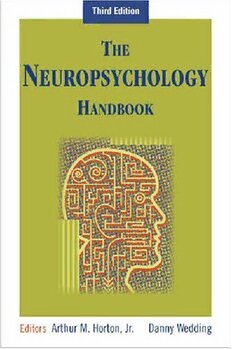
The Neuropsychology Handbook PDF
856 Pages·2008·3.357 MB·English
Most books are stored in the elastic cloud where traffic is expensive. For this reason, we have a limit on daily download.
Preview The Neuropsychology Handbook
Description:
The Neuropsychology Handbook, 3rd Edition edited by Arthur M. Horton Jr., Danny Wedding (Springer Publishing Company) In the last decade, the number of books, courses, training opportunities, and journals dealing with clinical neuropsychology has greatly increased. Demand for a complete reference in the field is growing as practitioners in private practice, the court system, and the medical field continue to make discoveries and advance our knowledge of the brain system and how it affects our everyday lives. In order to address this urgent need, Drs. Horton and Wedding have edited this Third Edition of the classic Neuropsychology Handbook
. In its pages are reviews of all the major areas in which clinical neuropsychologists work:
* the foundations of clinical neuropsychology
* brain structure and function
* neurological disorders
* psychiatric disorders
* diagnostic decision-making
* symptom validity testing
* neuroimaging
* behavioral change following traumatic brain injury
* disability determination
* rehabilitation planning, and more
Very specialized areas of practice such as clinical neuropsychology with children, clinical neurotoxicology, and neuropsychological assessment in criminal law cases also receive chapters.
Great enthusiasm among professional psychologists in independent practice for the specialization of clinical neuropsychology can be seen in a number of events. In the last decade, a number of books dealing with clinical neuropsychology have been published for the graduate and professional markets, departments of psychology are developing courses and providing training experiences, and new journals have been established. There are also increasing numbers of requests from attorneys and judges for neuropsychologists to interact in the clini¬cal setting by quantifying the nature and extent of cortical damage in cases of automobile or industrial accident or neurotoxin exposure.
Indeed, there is considerable evidence to support the opinion that clinical neuropsychology is rapidly expanding as a professional prac¬tice area across the nation. While managed care has reduced reimbursement for psychological services in the last decade, there has still been significant growth in the need for clinical neuropsychological services. A salient fact concerning clinical neuropsychology is that it is perhaps the prime example of an area of professional specialization that was developed by practitioners. While many clinical neuropsychologists engage in full-or part-time independent practice, there has been con¬siderable evolution of the traditional independent practitioner role.
In order to address the urgent need for an authoritative reference work for the rapidly growing field, The Neuropsychology Handbook, Third Edition, has been published. The Handbook reviews the major areas in which clinical neuropsychologists work. Specific areas covered include the foundations of clinical neuropsychology, such as the neuropsychological basis of mental abilities, diagnostic decision making, and symptom validity testing. Specific chapters include nemoimaging, behavioral change following traumatic brain injury, and rehabilitation planning. A remaining section includes very specialized areas of practice chapters on clinical neuropsychology with children, clinical neurotoxicology, and neuropsychological assessment in sports. A concluding chapter on the future of clinical neuropsychology completes the Handbook.
The Neuropsychology Handbook, Third Edition, is intended for clini¬cal neuropsychologists in practice and others who utilize neuropsy¬chological data in their decision making. Also, other professionals who enter the clinical arena and rely on neuropsychological opinions, such as psychiatrists, neurologists, clinical psychologists, school psychologists, social workers, counselors and special educators, as well as other health care and educational professionals, will find the Handbook of considerable value. The hope and expectation is that the Handbook will make an important contribution to clinical neuropsychology and will thereby meet the challenge of alleviating human misery and promoting positive adaptation by brain-injured children and adults.
See more
The list of books you might like
Most books are stored in the elastic cloud where traffic is expensive. For this reason, we have a limit on daily download.
